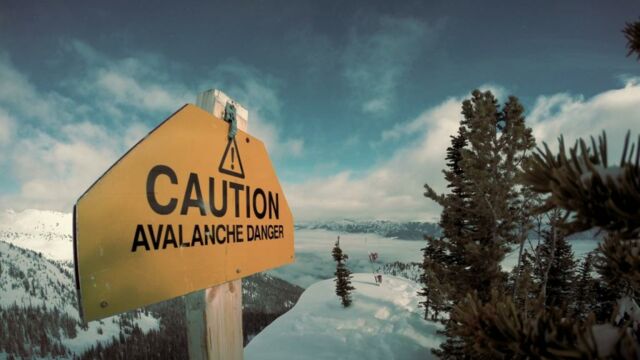Winter is coming, and with it the ski season! In snowy regions, some resorts didn't wait until the end of December to start up again, and Isère, for example, should also be opening some resorts soon. But with the mountains also come... mountain hazards, starting with avalanches. Although they are rare, avalanches can unfortunately be fatal, even if a few simple steps can give you a better chance of avoiding losing your life.
Discover our latest podcast
The most effective safety measure is prevention
At the risk of surprising you, the easiest way to avoid getting caught in an avalanche is... not to get caught in one. This means avoiding off-piste activities, finding out as much as you can about the area you want to reach and, in particular, the weather conditions and avalanche risk (there's a scale from 1 to 3). According to the Sapeurs Pompiers de France website:
Over the last ten years, almost half of all off-piste avalanches have occurred during a risk 3 episode, a risk that is too often trivialized.
So it's vital to take the weather into account and not underestimate the risk of avalanche. As Jill Fredston, avalanche expert and author of several books on the subject, also points out:
The key to surviving an avalanche is not to get caught. In all the accidents I've seen, a number of clues pointed to instability.
Yes, but what do you do when faced with an avalanche after taking all the necessary precautions?
Read more:Scientists believe this method could enable us to survive an asteroid attack
Don't try to outrun the avalanche
If you're skiing or snowboarding and an avalanche breaks out above you, there's no need to try to outrun it, James Bond-style. In fact, 'some avalanches can reach speeds of 400 km/h', as the government's YouTube channel points out.
It is therefore advisable to move sideways, to avoid being swept away as much as possible. Another tip is to hold on to something solid, like a tree, to avoid being swept away. Otherwise, try to 'swim' to stay above the surface of the avalanche. If you do get swept away, try to protect your mouth and nose from suffocating under the snow, and use your arm to create an air pocket.
Once the avalanche has passed, try to dig towards the surface. If this is not possible, the most important thing is to remain calm and save energy by avoiding unnecessary effort. Shout regularly to indicate your position, or if you hear or see help nearby.
Finally, your best friend in the event of an avalanche is the 'Avalanche Victim Detector'! This is a small electronic device, fitted with a transceiver, which can locate a person trapped under the snow. This device must be carried and charged on all potentially dangerous outings.
Read more:This heroic dog saves the life of his elderly owner who was drowning
This article has been translated from Gentside FR.
Sources used:
Sapeurs Pompiers de France: PRÉVENTION DES RISQUES LIÉS À L’AVALANCHE
Slate: Why I Stopped Doing Avalanche Rescue Missions















